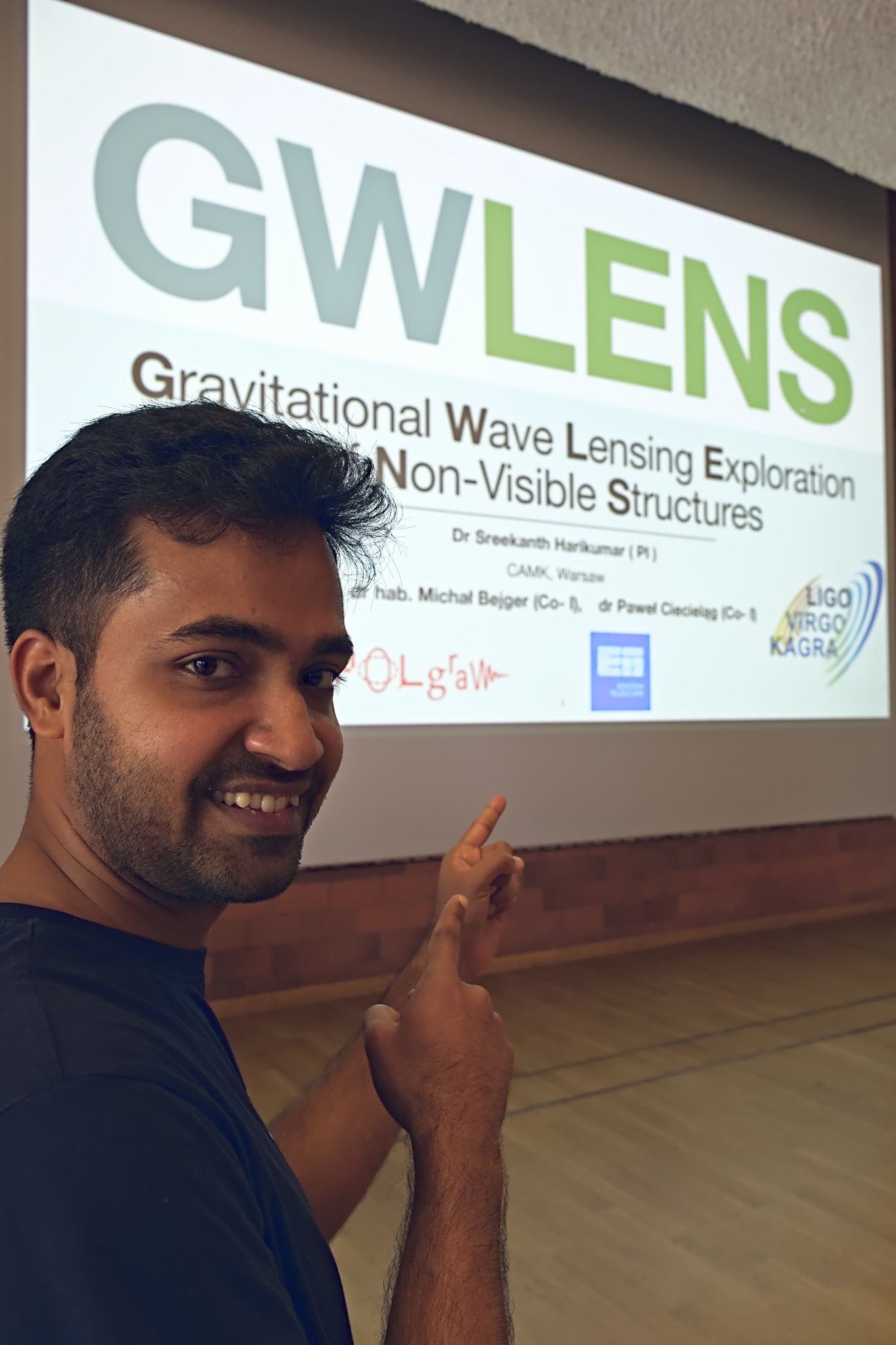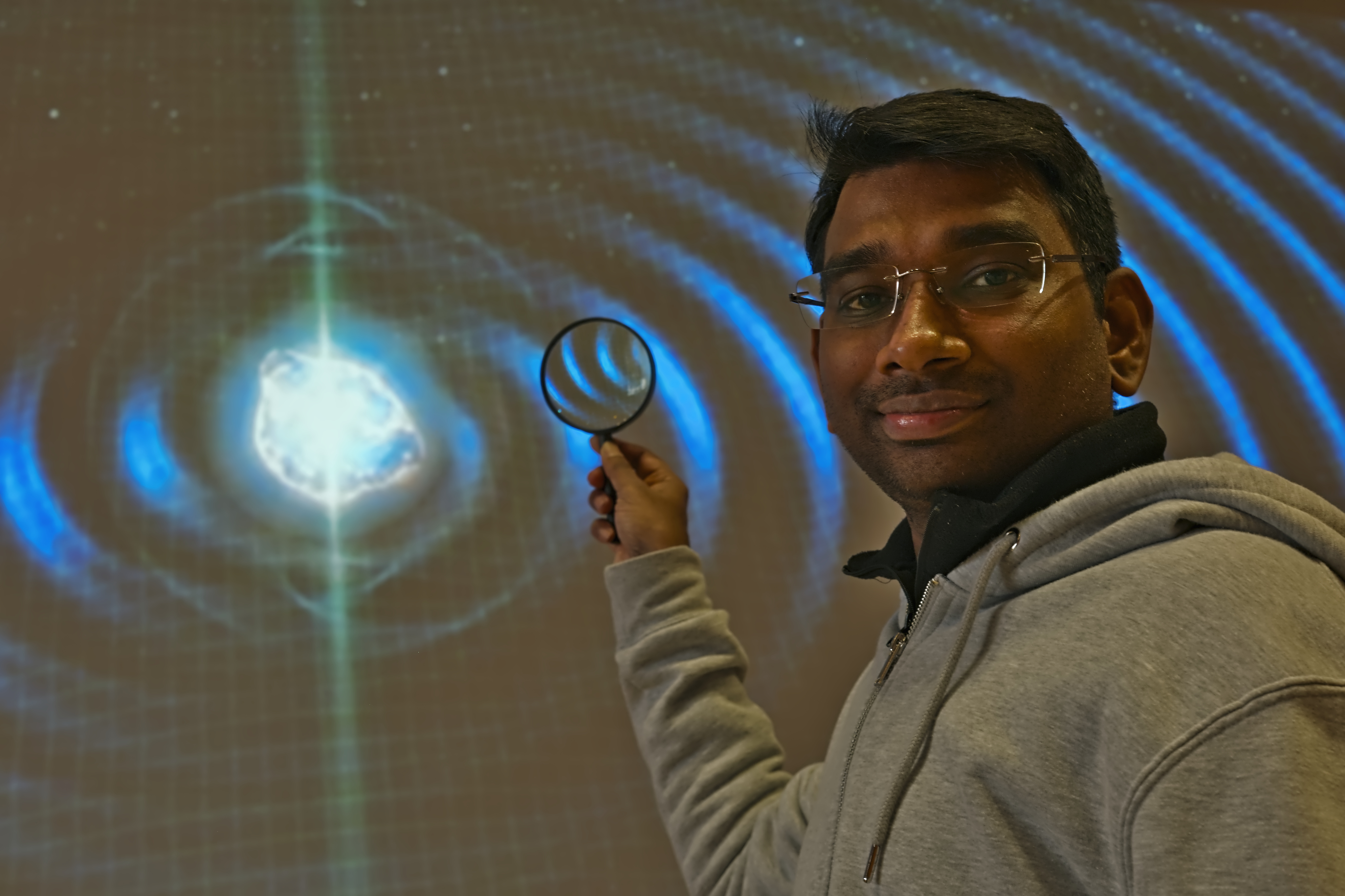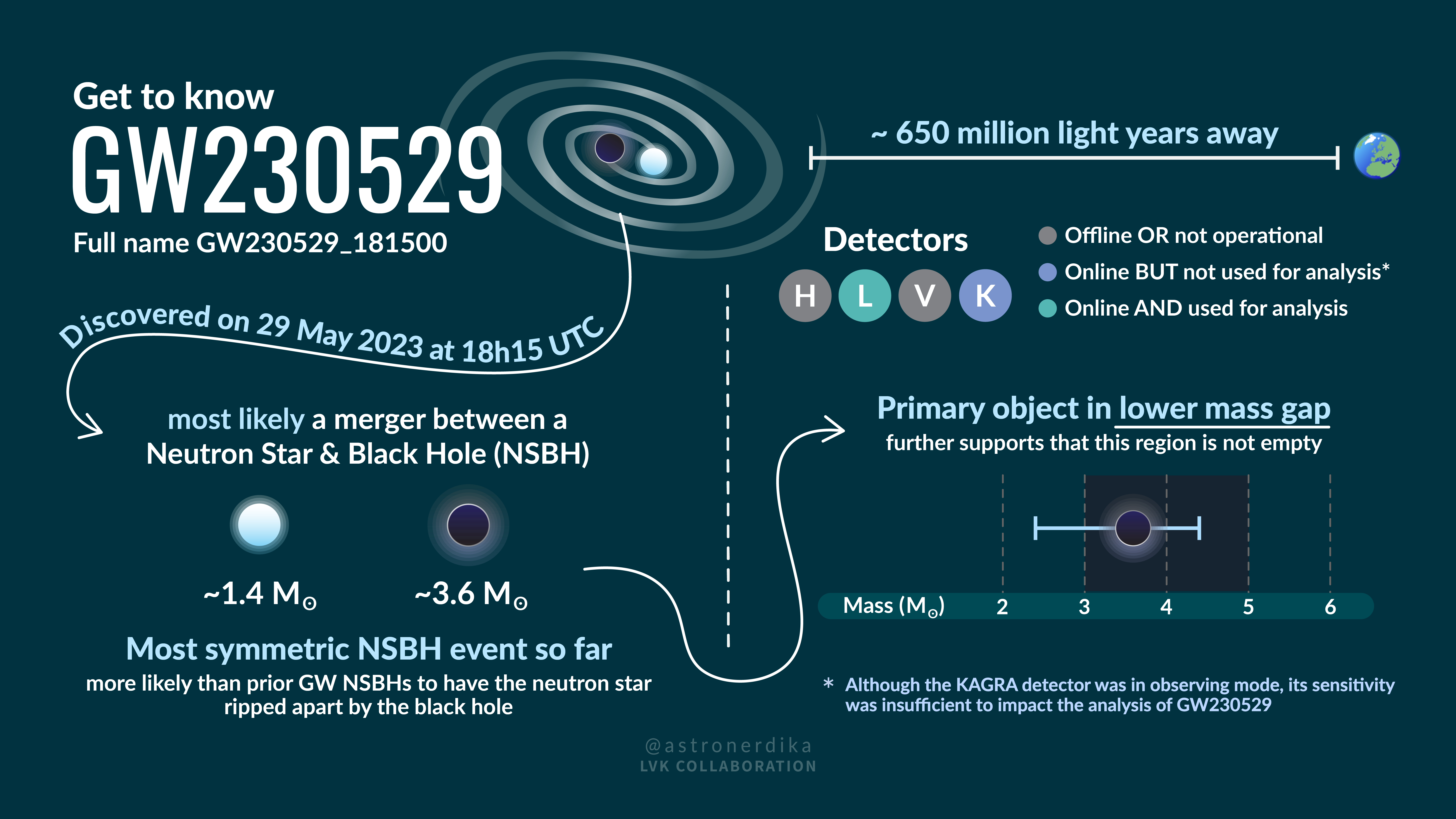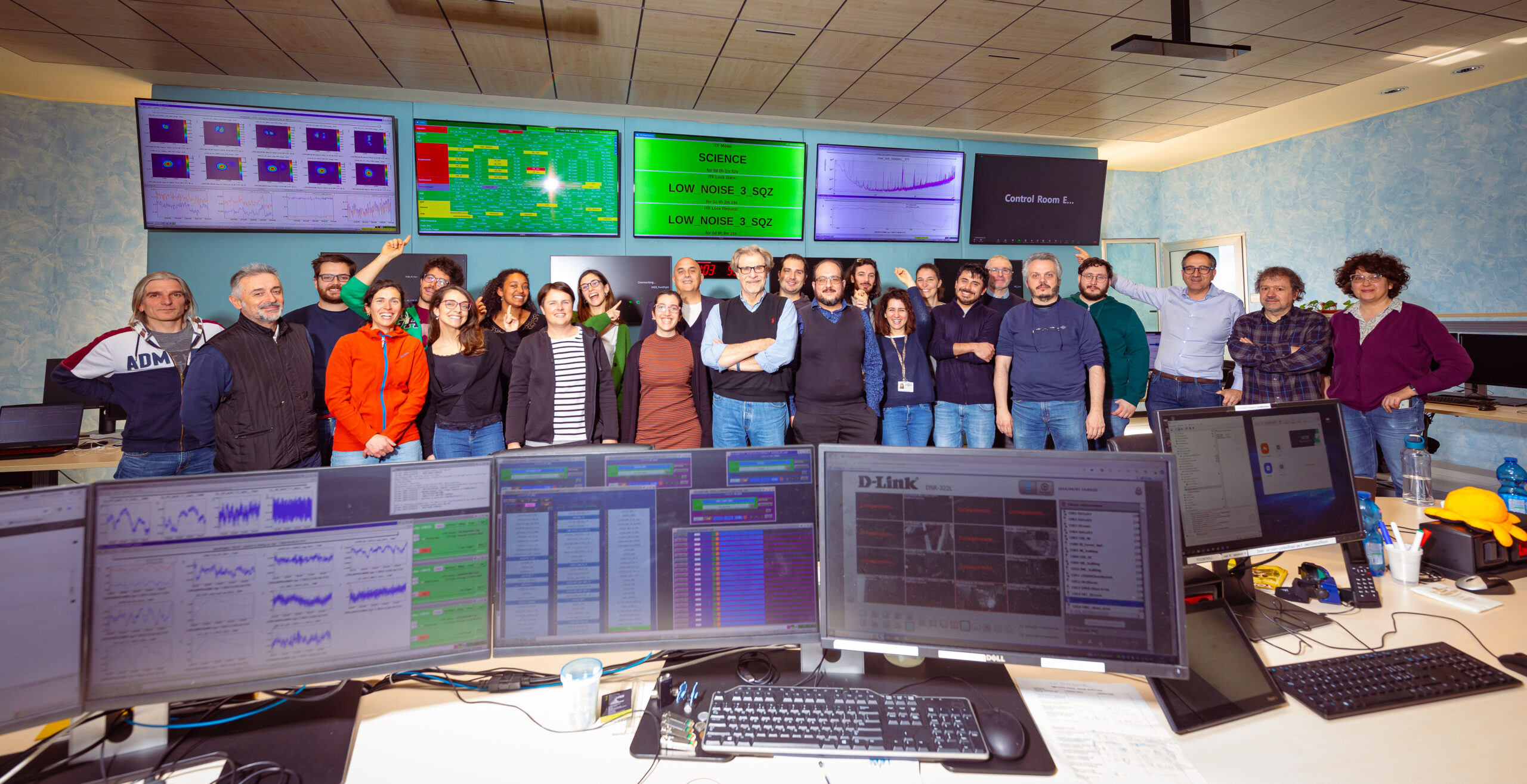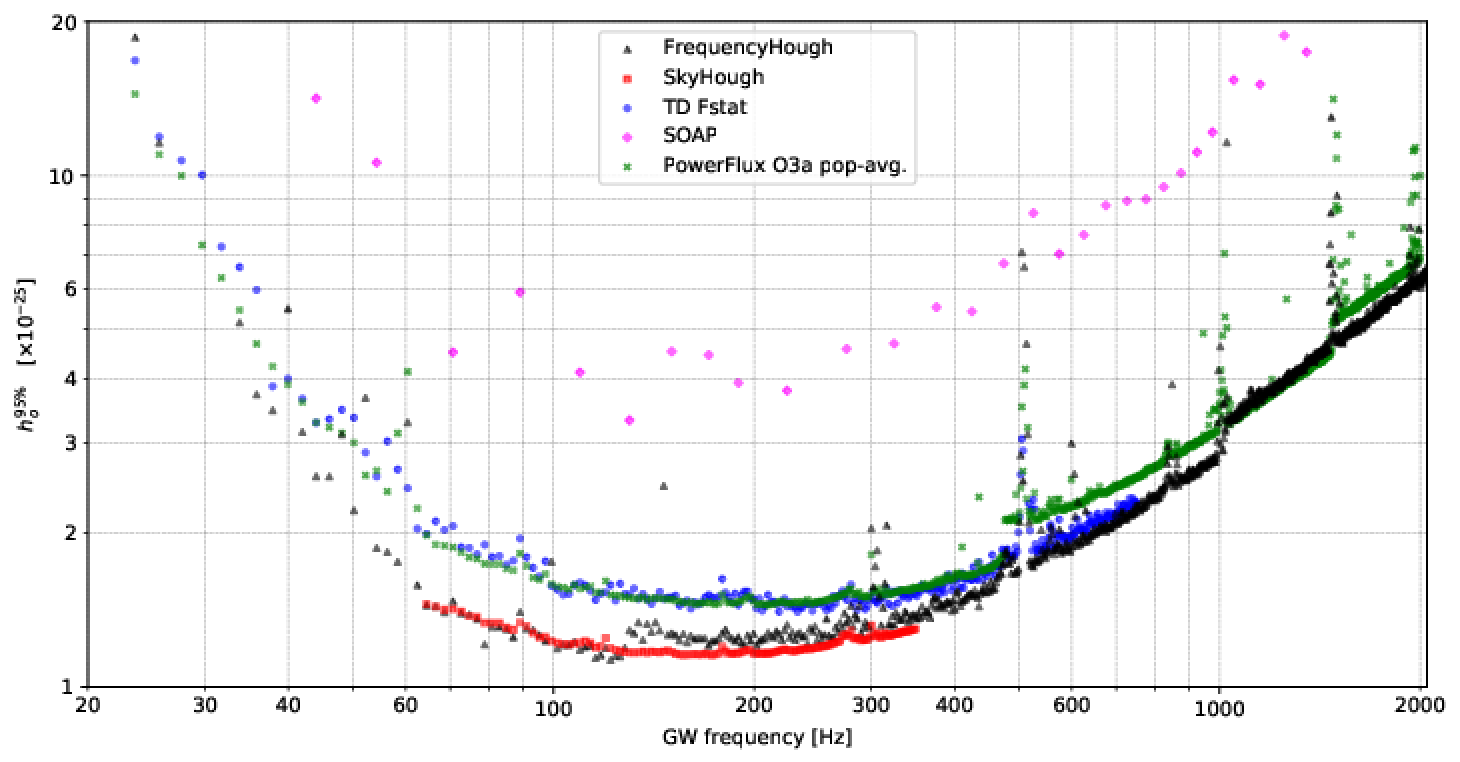Gravitational Waves: astrophysics, source modeling, data analysis, construction of the Virgo detector
A member of our group from Copernicus Astronomical Center PAN, Sreekanth Harikumar got a NCN Sonatina grant for a project: “Gravitational Wave Lensing Exploration of Non-visible Structures”.
The aim of the project is to use gravitational waves to understand and solve the mysterious nature of dark matter. Galaxies are known to exist in the dark matter halos. To investigate them, the phenomenon of gravitational wave lensing will be employed. When a galaxy happens to lie along the line of sight between our gravitational wave source and the detector, it will result in gravitational wave lensing.
The LIGO-Virgo-KAGRA (LVK) Collaboration has announced the detection of the merger of the most massive black holes ever observed with gravitational waves, using the US National Science Foundation funded LIGO Hanford and Livingston Observatories. The merger produced a final black hole more than 225 times the mass of our Sun. The signal, designated GW231123, was observed during the fourth observing run (O4) of the LVK network on November 23, 2023.
A member of our group from Copernicus Astronomical Center PAN, Sudhagar Suyamprakasam got a Preludium NCN grant for a project: “Through the lens: discovering continuous gravitational waves amplified by microlensing”.
Non-symmetric rotating neutron stars are prospective sources of quasi-monochromatic (long duration, continuous) gravitational waves. They are yet to be detected as their intrinsic gravitational-wave amplitude is smaller than transient gravitational waves emitted by compact binary systems inspirals of neutron stars and black holes, now routinely detected by the LIGO-Virgo-KAGRA Collaboration network of detectors.
In May 2023, shortly after the start of the fourth LIGO-Virgo-KAGRA observing run, the LIGO Livingston detector observed a gravitational-wave signal from the collision of what is most likely a neutron star with a compact object that is 2.5 to 4.5 times the mass of our Sun. Neutron stars and black holes are both compact objects, the dense remnants of massive stellar explosions. What makes this signal, called GW230529, intriguing is the mass of the heavier object.
Next week, the LIGO and Virgo detectors will resume their observing campaigns, which promise to collect more than 200 gravitational-wave events by the end of this current observing run (O4). Astronomers also hope that new multi-messenger events will be detected. Multi-messenger events are those observed both in gravitational and electromagnetic waves, and can be further followed up by other telescopes.
The LIGO-Virgo-KAGRA Collaboration will begin the second part of its fourth observing run (O4b) on April 10th.
The LIGO-Virgo-KAGRA collaboration has published the results of the search for continuous gravitational waves in the data from the entire O3 observational campaign. It is expected that such waves can be emitted by e.g. axially asymmetric neutron stars, but their amplitude is much smaller than the regularly observed, short-term signals emitted during black hole mergers. For this reason, they have not been observed so far. In this publication, we present the results of four independent methods obtained by various research groups that carried out the so-called blind searches in a wide range of parameters: all sky, frequency range from 10 to 2048 Hz and rate of frequency change from $-10^{- 8}$ to $10^{- 9}$ Hz / s.

